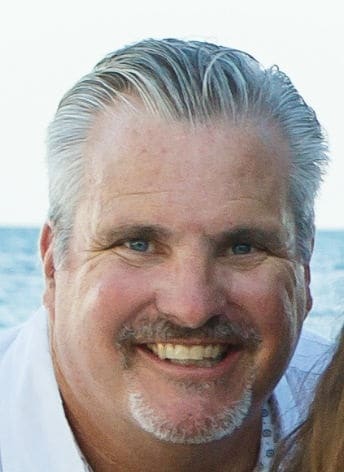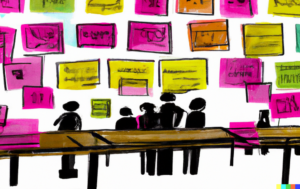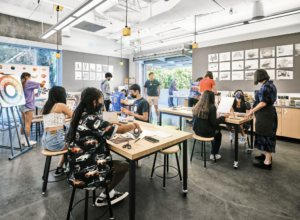‘Imagine Project’ Turns Trauma into Strength, Empathy and Sense of Community

There is a lot of evidence that young people are experiencing more stress, anxiety, depression, and trauma than ever before. Research shows that children who have untreated mental health challenges are at higher risk to perform poorly in school, miss out on important social experiences, and engage in substance abuse.
In order to respond to this epidemic, educators around the country and the globe are implementing The Imagine Project. This is a seven-step journaling process, according to Executive Director and Founder Dianne Maroney, that provides young people a simple way to express their stress and/or trauma, as well as be encouraged to imagine a new story for themselves.
Maroney—who has a background in psychiatric and mental health nursing—said that this five-year-old nonprofit has reached over 250,000 students in 17 countries and all 50 states. She said that she is keenly aware of the trauma and stress in young people’s lives.
“We can no longer look the other way, or not look at all,” said Maroney. “We need to provide our kids support so they can learn and successfully navigate life.”
Through sharing her own personal story of trauma—based on her daughter who was born prematurely—Maroney began to get stories from other parents with similar experiences.
Combining her background with the individuals sharing their stories of trauma through writing, Maroney realized that she could help kids process stress and trauma. Based on 30 years of research, Maroney created four different seven-step journals that are available to all K-12 educators and students for free.
This unique journaling process, according to Maroney, decreases bullying, dropout rates, anxiety, depression, and post-traumatic stress syndrome, while simultaneously increasing academic success, emotional intelligence, and empathy.
“What’s key here is that kids tell a story that has been difficult and they use the word ‘imagine’ to tell their stories,” said Maroney. “Often, they think they are the only ones who have experienced trauma like they have.”
Once teachers have guided students through the seven-step process, many teachers will ask students to read and share their stories out loud with one another.
“It creates camaraderie and compassion in the classroom,” said Maroney. “As they hear from others about what they have experienced—it’s empowering.”
Recently, all of the 8th Graders at iLEAD Lancaster Charter School participated in the Imagine Project. According to Facilitator Cherise Robinson, the Imagine Project’s process helps students to ultimately share their story and make it a positive experience.
“It was really magical,” said Robinson. “The stories are so real and raw.”
The facilitators were really amazed that the learners experienced such an instant connection producing a noticeable community, familial vibe.
“They were openly loving towards one another and discovered the ability to lift one another through difficult challenges,” said Robinson. “Ones that were afraid to share initially were encouraged by their peers.”
8th Grade Facilitator Adriana Keith also said that this project exceeded all her expectations and that she did not expect the learners to respond the way they did.
“They were supporting one another even on the chat in Zoom,” said Keith. “We didn’t expect the project to build so much community so instantly.”
In addition to the increased sense of community, Facilitator Regene Sterling said that the final steps of the process and project are really instrumental in moving forward in that it asks learners to dream a different future.
“They learn that their stories are not finished and that they are still writing their stories,” said Sterling. “It doesn’t leave the trauma open. Instead, it leaves them feeling empowered with their lives and not a victim of circumstance.”
8th Grade Staff Member Cortez Espinoza concurred with Sterling regarding the power of how the process and stories conclude. “It’s like a call to action,” said Espinoza. “Instead of living in the past trauma, it’s about writing their own future stories in new and better ways.
Robinson and her team said that this will become an annual project and that she and her team realized that this project sets the foundation for creating relationships and allows the facilitators to know the learners at a deeper level.
“We all become more real to one another and facilitate the bond at the very beginning of the year,” said Robinson. “This allows us to create the learning environment for all future projects as well as better collaboration and communication.”
What students and teachers typically experience is not new for Maroney, but is always powerful. She said the Imagine Project is hard to do, but more than worth it.
“If kids begin to understand one other at a different level, it’s amazing. We see the transformation with both the kids, as well as the families,” said Maroney. “Parents come back and say thank you for creating the space for kids to do this.”
Ultimately, the Imagine Project is about not only dealing with trauma in productive ways, but also modeling that everyone has a story. Maroney said that teachers are the best positioned to reach and hear the stories of all kids.
“They find their voice,” said Maroney. “They find their place in the world.”
For more, see:
- From On Edge To On Track: Elements of Trauma Sensitive Schools
- Why Every K-12 District Should Invest in Social and Emotional Learning
- Supporting Student Agency of SEL
Stay in-the-know with innovations in learning by signing up for the weekly Smart Update.






Nadine Fairy
A team module collection approximately trauma-knowledgeable practices for educators. It affords records approximately the significance of relationships in recuperation trauma, in developing a feel of protection and trust, and in assisting college students who've skilled trauma. It shows how relationships may be constructed and strengthened.